The document discusses the impending exhaustion of IPv4 address space and the necessity for transitioning to IPv6, which offers a significantly larger address pool and additional functionalities like multicast that are beneficial to content providers. It outlines various strategies for Internet Service Providers (ISPs) to integrate IPv6 while operating in a mixed IPv4/IPv6 environment, and emphasizes the importance of planning for service accessibility in light of these changes. The document also highlights the role of content providers in adapting to these changes to maintain service quality and ensure compatibility across different user access methods.
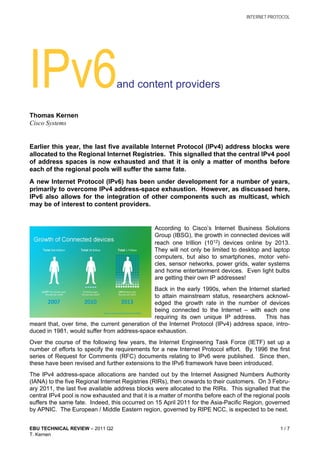
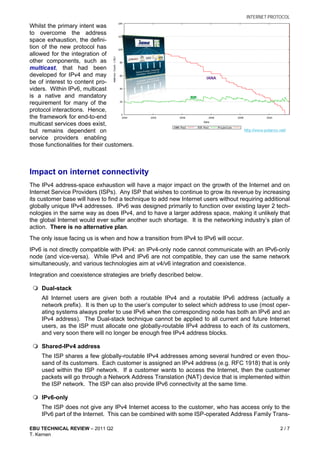
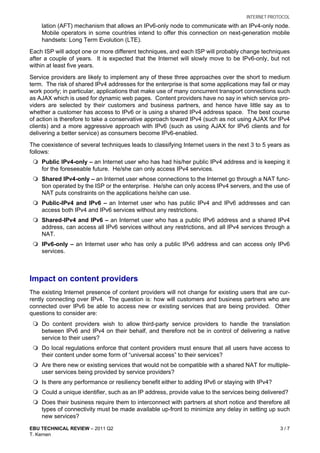
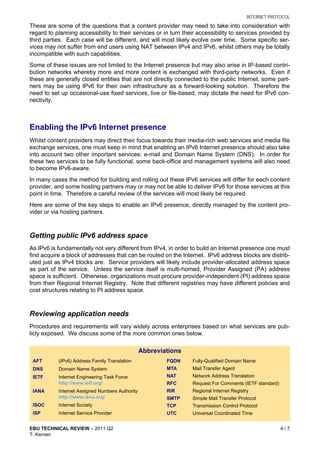
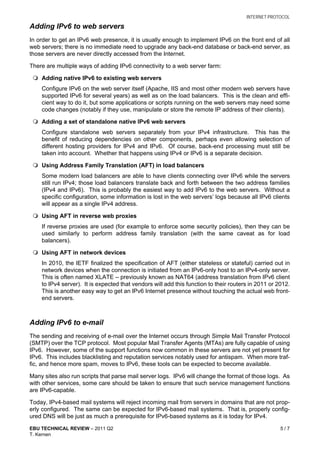

![INTERNET PROTOCOL
Whilst this was just a 24-hour event running on 8 June 2011, 00:00 to 23:59 UTC, many of the sites
that enabled IPv6 connectivity on that day are expected to keep their IPv6 services operating hence-
forth.
It is to be noted that in the content provider industry, Google (including their YouTube service),
Facebook and Netflix have been operating services over IPv6 for some time. From a European per-
spective, RTBF in Belgium, Heise.de in Germany, A-pressen Digitale Medier and VG Multimedia in
Norway already provide their content over IPv6.
Conclusions
It is clear that the time has come for content providers around the world to review their online strat-
egy and the impact of IPv6 on their business. This impacts the ability of their users to reach their
services independently of the means provided to access the Internet by their current service pro-
vider.
Whilst initially confined to research environments and core networks, we are now beyond the stage
of experimentation and have moved into the world of real deployments in order to ensure service
and business continuity.
Preparing for these changes and implementing them in the manner that makes the most sense for
their business will be key to the success of content providers in the years to come.
Further information
[1] IPv6 Act Now: http://www.ipv6actnow.org/
[2] World IPv6 Day: http://isoc.org/wp/worldipv6day/
[3] Test your IPv6 Connectivity: http://test-ipv6.com/
[4] Cisco IPv6: http://cisco.com/go/ipv6/
This version: 23 June 2011
Published by the European Broadcasting Union, Geneva, Switzerland
ISSN: 1609-1469
Editeur Responsable: Lieven Vermaele
Editor: Mike Meyer
E-mail: tech@ebu.ch
The responsibility for views expressed in this article
rests solely with the author
EBU TECHNICAL REVIEW – 2011 Q2 7/7
T. Kernen](https://image.slidesharecdn.com/trev2011-q2ipv6kernen-110623113125-phpapp01/85/IPv6-Content-Providers-7-320.jpg)